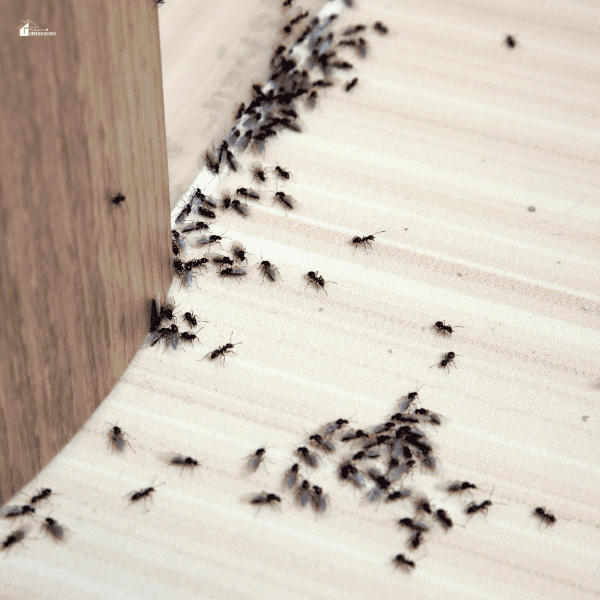Seasonal Pest Control Tips: Preparing Your Home for Winter
This post may contain affiliate links which might earn us money. Please read my Disclosure and Privacy policies hereAs the temperatures drop, pests of all kinds seek warmth and shelter—often inside your home. Winter may seem like a time when pest activity slows down, but many critters, including rodents, cockroaches, and spiders, actively look for cozy hiding spots during the colder months. Taking proactive steps to pest-proof your home before winter arrives can save you stress and expense later. Here’s how to prepare your home to keep pests outside where they belong.

Common Winter Pests to Watch For
Before diving into prevention strategies, it’s important to understand the types of pests most likely to invade your home during winter:
- Rodents: Mice and rats are notorious for squeezing through tiny openings to escape the cold. They can cause damage by chewing through insulation, wires, and even wooden structures.
- Cockroaches: These resilient pests thrive in warm, moist environments, making basements, kitchens, and bathrooms prime real estate.
- Spiders: While many spiders are harmless, they can become unwelcome houseguests when they seek shelter indoors.
- Silverfish and Other Insects: These pests may settle in dark, humid spaces like attics or closets, causing damage to paper, fabric, and other materials.
Knowing what you’re up against will help you tailor your prevention strategies effectively.
Seal Entry Points
Pests are adept at finding ways into your home, no matter how small the gap. Conduct a thorough inspection of your home’s exterior, looking for potential entry points.
- Seal Cracks and Gaps: Use caulk or weatherproof sealant to close gaps around windows, doors, and utility pipes.
- Repair Damaged Screens: Ensure window screens are intact and install door sweeps to block gaps at the bottom of exterior doors.
- Install Chimney Caps: A chimney is an open invitation for pests like squirrels and birds. A cap will block their access while still allowing for proper ventilation.
By eliminating these entry points, you’ll make it significantly harder for pests to infiltrate your home.
Keep Your Home Clean and Clutter-Free
Cleanliness plays a huge role in deterring pests. Many are drawn to food scraps and clutter, where they can find both sustenance and hiding spots.
- Store Food Properly: Keep food in airtight containers and avoid leaving pet food out overnight.
- Vacuum Regularly: This removes crumbs, dust, and potential hiding places for pests.
- Declutter Storage Areas: Garages, basements, and attics often become dumping grounds for clutter. Clear out unnecessary items and organize what remains to reduce hiding spots.
Maintaining a clean home creates an environment that is far less inviting for pests.

Address Moisture Issues
Many pests, such as cockroaches and silverfish, are drawn to moist environments. Addressing water sources can significantly reduce the risk of infestations.
- Fix Leaks: Repair leaky pipes, faucets, and fixtures promptly.
- Improve Ventilation: Use dehumidifiers or exhaust fans in areas prone to dampness, such as basements or bathrooms.
- Clean Gutters: Clogged gutters can lead to water pooling near your foundation, attracting pests like rodents and insects.
Dry conditions make your home far less appealing to pests looking for shelter.
Use Pest Control Products and Services
If you want to take extra precautions, pest control treatments can provide an additional layer of protection. Consider these approaches:
- Use Baits and Traps: Place traps or baits in areas where pests are likely to enter, such as garages, attics, and basements.
- Apply Pest Sprays: Use insecticides designed for specific pests, but always follow safety instructions carefully.
- Hire Professionals: A professional pest control service can provide targeted treatments and long-term solutions.
Companies like Turner Pest Control Tampa offer comprehensive pest management services to help protect your home during the winter months. Their expertise ensures that your home stays pest-free while keeping your family and pets safe.
Long-Term Prevention Strategies
Winter pest control isn’t just about reacting to current problems—it’s about preventing future ones. Here are some long-term strategies to consider:
- Inspect Your Home Annually: Schedule regular pest inspections to identify and address vulnerabilities before they become infestations.
- Maintain Your Yard: Trim bushes, rake leaves, and keep firewood at least 20 feet from your home. These steps eliminate hiding places for pests near your home’s foundation.
- Upgrade Insulation: Proper insulation not only keeps your home warm but also blocks potential entry points for small pests.
Conclusion
Winter is a time for cozy evenings indoors, not dealing with unwelcome pests. By sealing entry points, maintaining cleanliness, addressing moisture issues, and seeking professional help when needed, you can protect your home from winter pests. Taking action now ensures your home remains a safe, comfortable haven throughout the colder months. With services, you can have peace of mind knowing your pest control needs are in expert hands.







